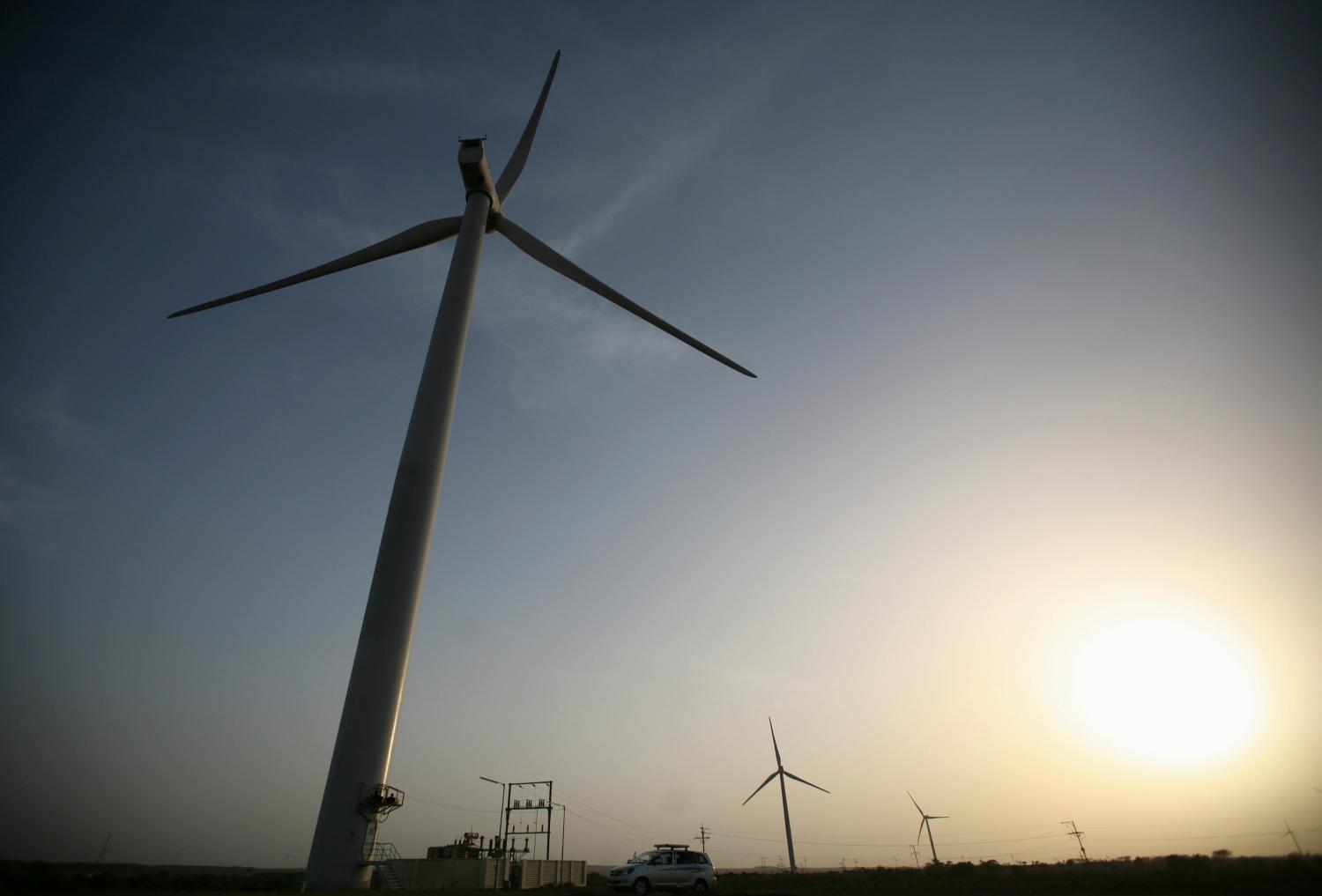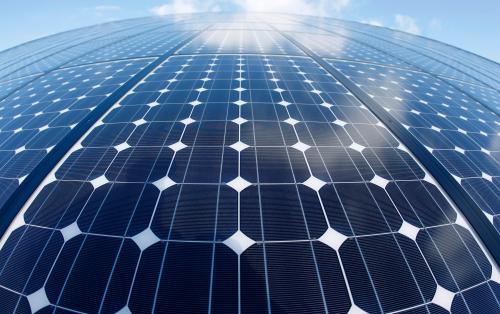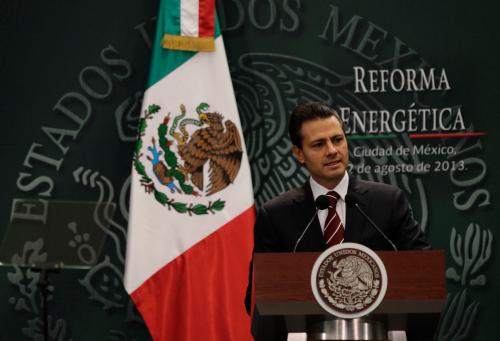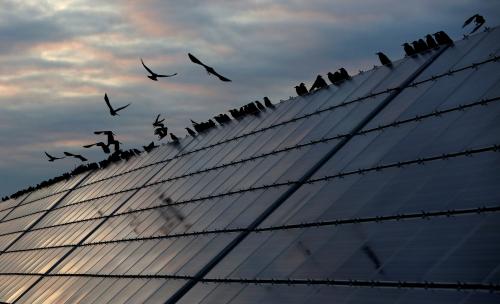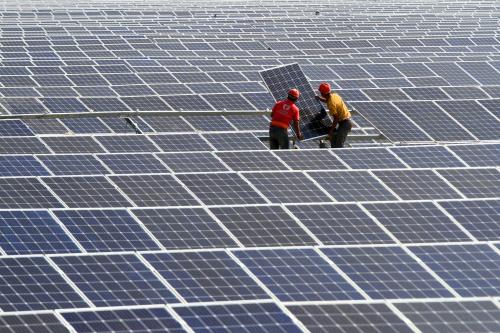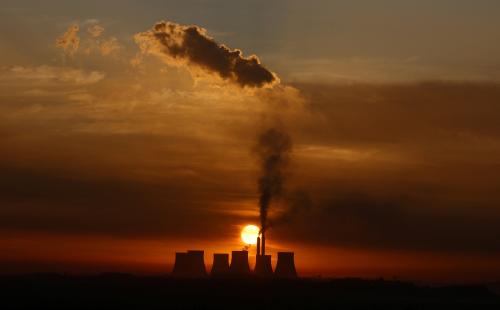Content from the Brookings Institution India Center is now archived. After seven years of an impactful partnership, as of September 11, 2020, Brookings India is now the Centre for Social and Economic Progress, an independent public policy institution based in India.
This paper is fourth in a series from the Cross-Brookings Initiative on Energy and Climate. The paper’s executive summary follows. View the full series here.
Executive Summary
Even before signing the Paris climate agreement, the Indian government announced extremely ambitious renewable energy (RE) targets that would quadruple the country’s RE capacity between late 2014 and 2022, to 175 gigawatts (GW).1
From India’s relatively small RE base, this target implies annual growth of 25 percent—a targeted buildout rate even faster than China’s, which is widely seen as the world’s leader in deploying RE. However, a set of political and economic contradictions are built into this ambitious plan. These contradictions reveal how policymaking and implementation work in India and why visions for change often don’t become reality.
At the center of India’s contradictions are two core facts.
The first fact is that investment has created a vibrant and competitive RE market in India. The private sector is central in building most new RE capacity—it has developed aggressive financing mechanisms and is mobilizing massive amounts of capital. The RE industry is a heavily Indian affair. Foreign capital has not rushed in, thanks to costly foreign currency hedging and wariness about securing contracts and steady payments. But the RE business has risen in magnitude and power.
The other core fact is that RE faces a host of challenges, some particularly acute in or unique to India. RE cannot yet compete against most existing coal-fired generation, which remains the dominant source of power in India. Grid-scale solar and wind projects have found bids as low as 2.4 rupees per kilowatt-hour (about 3.9 cents per kilowatt-hour, or kWh),2 a 70 percent decline in just a few years. Falling RE costs have inspired discussions of “grid parity”—an imagined moment when RE will push coal off the Indian grid. That moment is still far in the future when one includes the full costs of integrating RE into the grid. We find that the best performing RE systems, with aggressive assumptions about the cost of integration, are competitive with the most expensive new coal projects, but not with existing coal plants.
Another key challenge is that India’s grid and utilities are weak. The electricity distribution companies (DisComs), almost all owned and controlled by state governments, play central roles. Most DisComs are struggling financially in ways that can lead them to delay payments, renegotiate power purchase agreements (PPAs), or avoid signing new PPAs.
The difficulties of integrating RE into India’s power grid will worsen as RE’s share of generation increases, causing disproportionate strain on states rich in RE resources. Other sources of generation—notably coal—will need to back down to accommodate rising yet variable RE generation. RE integration would be easier across larger balancing areas within the grid, but that approach would require substantial investments in long-distance RE-centric transmission, which have been limited so far. Energy storage could help, and we project the need for massive new storage capabilities at acceptable cost starting in the early to mid-2020s. However, a roadmap for obtaining affordable storage is also elusive.
Despite these sobering facts, the Indian government has repeatedly emphasized that its RE goals are the core of its energy policy. This insistence remains despite growing evidence that India does not need to meet its RE targets to achieve its goals under the Paris climate agreement. This contradiction persists because of the politics of RE in India. The central government sees RE as a vehicle for building new industries and rewiring investment incentives in the power grid, and as an extension of what Prime Minister Narendra Modi achieved when he was chief minister of Gujarat, a pro-business state in India that became a beacon for private sector-led shifts to renewable and cleaner power, not to mention an improved electricity grid.
Yet consumers are largely indifferent to renewables and concerned much more about electricity cost and reliability. The political power of coal also remains strong, along with the power of the railroads that earn much of their revenue from moving coal. RE’s impact on coal has been relatively limited thus far. Coal remains the dominant supply source, and is likely to grow at approximately 4 percent per year in terms of generation through 2030, a high growth rate in absolute terms, but lower than the past.3
Within this context, the central government has led by announcing bold goals for RE while failing to create the political, policy, and regulatory conditions that allow those goals to become reality. States often express hostility to rapid RE growth. Areas with high RE growth are likely to face high costs, especially when factoring in the impact on the rest of the grid. The states lag the central government in RE ambitions, and do not have Renewable Purchase Obligations (RPO) that add up to the national targets.
How did these contradictions emerge and persist? First, India’s energy planning is rooted in years of scarcity, with more supply seen as the answer to all problems. Second, a silo-based approach across generation sources, rather than a portfolio-based approach, informed policy design and execution. This was exacerbated by a target-oriented approach (following Soviet-styled 5-Year-Plans, instead of a market-oriented system that allowed realistic signaling). Such a focus on adding generation worked, more or less, in the past, but recent growth of generation capacity and lower electricity demand growth changes the entire calculus. The question today is not one of sufficient energy, but of energy available at the right time and place with the right characteristics, such as ramping and predictability. RE is particularly disruptive in a power system designed for large, centralized supply.
Looking to the future, growing RE’s share of generation will require institutional and regulatory actions to reduce the cost of grid integration. New market incentives are needed to create the right types of supply based on location, seasonal or daily availability, and ramping capabilities. Particularly important is a focus on the DisComs, which are a weak link in the existing system and quite vulnerable to disruption. The highest paying commercial and industrial customers are among the biggest investors in rooftop solar resources. An even bigger push toward RE by these important customers could accelerate the downward spiral of DisCom finances.
The world is watching India’s transition to cleaner energy. Many are ready to support the growth of RE, particularly at the expense of coal. However, India’s RE ambitions should be viewed not in terms of specific targets and numbers, but broader trends. Holistic policies will accelerate the transition.
-
Footnotes
- The 2015 Indian budget presented in February 2015 formalized the 175 GW RE target, but Power Minister Piyush Goyal spoke of higher targets at least as early as November 2014.
- “Year End Review 2017,” Ministry of New and Renewable Energy, Government of India, http://pib.nic.in/newsite/PrintRelease.aspx?relid=174832.
- “World Energy Outlook 2015,” (Paris: International Energy Agency, 2015), http://dx.doi.org/10.1787/weo-2015-en. A detailed bottom-up analysis on coal demand through 2030 by Sahil Ali (Brookings India, forthcoming) shows total coal growth inclusive of industrial use of approximately 3.8 percent.


